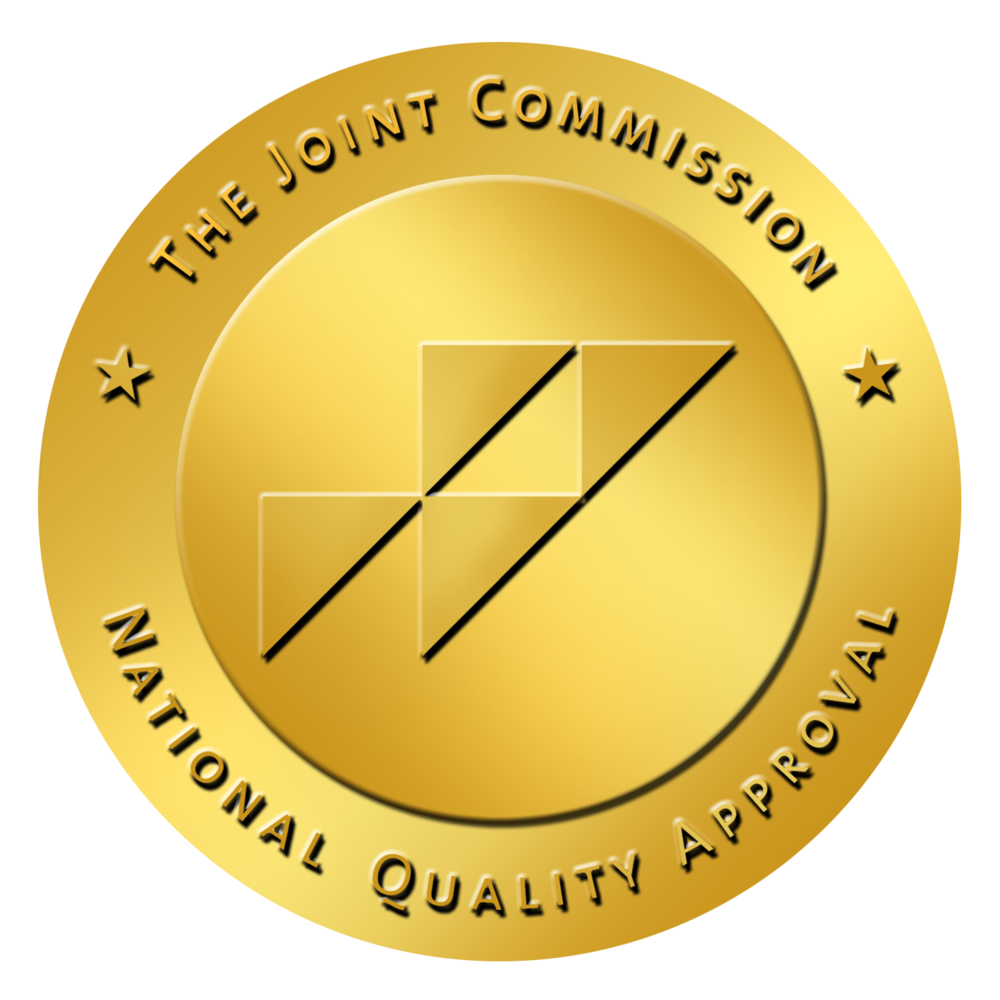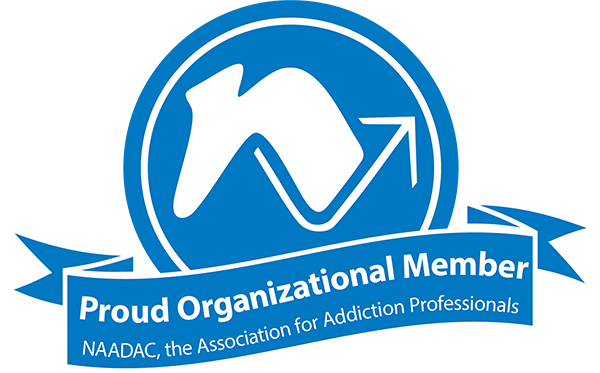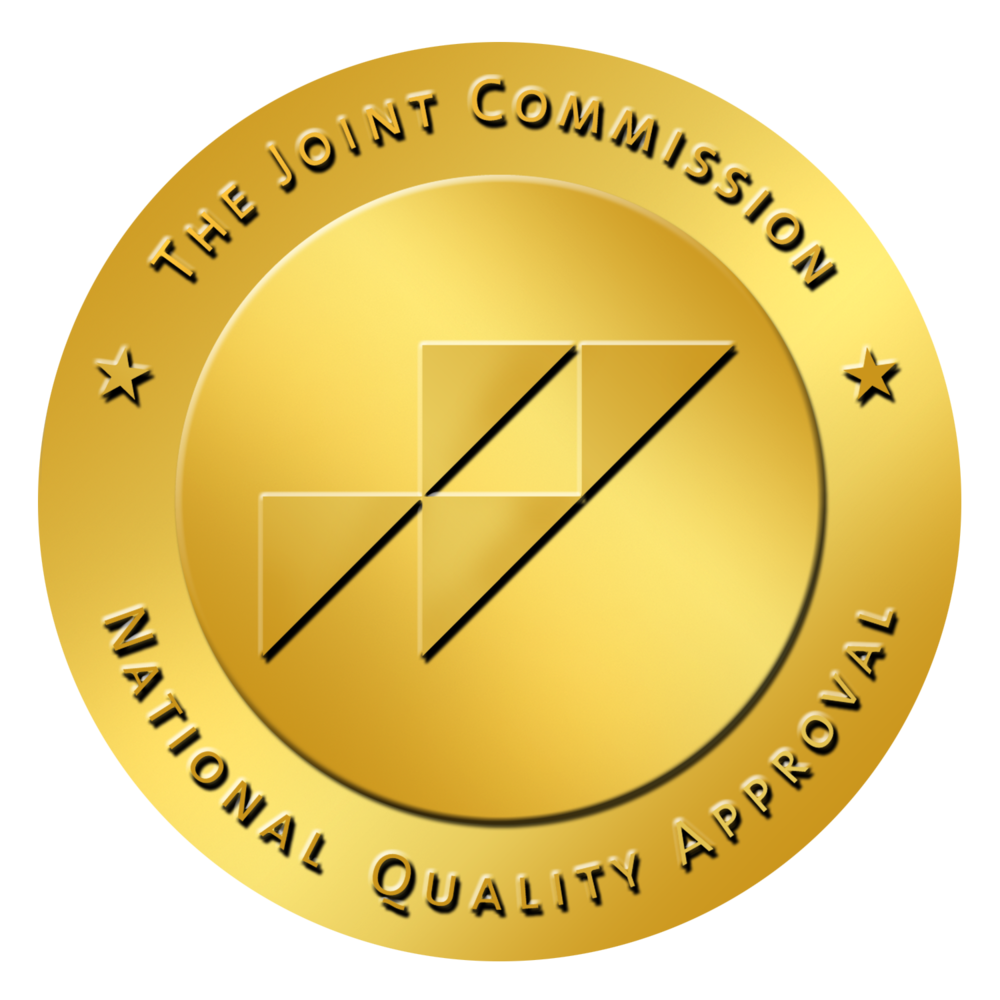Our minds hold a powerful influence over how we feel and act. It’s sometimes common for our own thoughts, no matter how unrealistic, to work against us. A small mistake at work might conjure thoughts like, “I’m not good at my job,” or “Everyone thinks I’m incompetent,” shaping what you might do next, perhaps avoiding taking on new responsibilities or withdrawing from colleagues.
It’s one example of what’s called a cognitive cycle, where our mindsets inform our emotions and subsequently drive our behaviors. All part of being human, most of the time this thinking is fleeting.
But when similar patterns become excessive, chronic or automatic, they can begin to show as signs and symptoms of conditions like depression or anxiety. Pervasive sentiments like “I’m unlovable” can diminish your sense of self-worth. Enjoyment engaging with people or activities you love begins to wane, impacting your well-being and outlook on life. Negative thinking becomes a disordered source of suffering.
Psychotherapist Nancy Colier explains why we might get trapped in these cycles. “We return to our suffering, because fundamentally we’re trying to make the negative experience come out a different way. Our mental replays are attempts to re-script what we don’t want into a new reality.”
How can therapy — namely Cognitive Behavioral Therapy (CBT) — become a solution? It teaches you to recognize unhelpful thought patterns at the very moment they happen using the power of your own mind, for greater control over your own emotional responses and actions.
Learn more about how CBT therapy works, what it treats and the many ways it can help.
What Is Cognitive Behavioral Therapy (CBT)?
When psychoanalyst Aaron Beck developed CBT in the 1960s, he observed that many of his patients struggling with depression tended to hold underlying beliefs about themselves and the world around them.
Dr. Beck proposed a theory: the way we often interpret or perceive situations or the world around us can influence how we act and react, even more than the experiences themselves. This distorted, automatic thinking can lead to negative emotions and lead you to act in specific ways.
He began crafting what he called cognitive therapy, a type of counselor-to-patient, research-driven talk therapy, with the guiding principle that many psychological and emotional difficulties stem from these unhelpful patterns of thinking and learned behaviors. Through CBT therapy, you have the ability within yourself to reframe them, feel better about yourself and behave in more positive ways that serve you well.
“Dr. Beck found that when he helped his patients evaluate and change their distorted thinking, they felt better and were able to modify their behavior,” notes a 2021 study. “When he helped them evaluate and change their underlying beliefs, their improvement was long-lasting.”
How Are Thoughts, Feelings, and Behaviors Connected?
What we think, the emotions we feel and how we act share a deeply interconnected relationship. In CBT therapy, they’re represented on the CBT triangle. Imagine them as separate points, each one influencing the other in an ongoing cycle.
Consider one of several possible Cognitive Behavioral Therapy examples for a person with social anxiety:
At a party or social gathering, your automatic thinking goes to, “I probably said the wrong thing. This always happens and people think I’m weird.”
Anxiety, inadequacy, self-consciousness, embarrassment
Your negative thoughts and feelings compel you to decline any future invitations. If you do attend, you withdraw further or stay quiet, reinforcing your original (false) belief that you’re socially awkward or unworthy of connecting with other people.
Part of what makes this relationship so difficult is that it can feel like it’ll be this way forever. But through CBT therapy, you can begin to recognize how your thoughts are just your perceptions and not a reflection of your worth or value as a person.
By confronting and challenging that maladaptive thinking, the cycle becomes interrupted — now, you have the opportunity for more positive, self-affirming modes of thought, feel better about yourself and, in the above example, feel comfortable and relaxed in social settings. (And remember that the thought>feeling>behavior relationship also travels in the opposite direction. Our actions can also influence how we feel and what we believe.)
What Is the Goal of CBT?
CBT is designed to help you reevaluate disordered thinking that has adversely affected your emotions and behaviors. When our thoughts are permeated with negativity, we see the world through a pessimistic lens and act in line with that focus. CBT’s goal is to help you shift your thinking to a more optimistic perspective, where your feelings and actions in your day-to-day life will follow suit.
“CBT places an emphasis on helping individuals learn to be their own therapists,” notes the American Psychological Association (APA).
What does this mean? CBT is all about giving you autonomy and agency over your thoughts, emotions and behaviors. In sessions, you’ll learn to spot where and when negative thought patterns arise. Evaluating them objectively and realistically allows you to observe when your
thinking may have been unhelpful or rooted in inaccuracy — clearing space to change how you think, how you feel and what you do in life.
How Does CBT Work?
The CBT process follows the CBT triangle. By interrupting negative automatic thoughts, it halts the chain reaction it creates on your feelings and actions.
Think of it like holding up a mirror to yourself, a microscope to your mindset. Your therapist helps you to slow down and pinpoint the exact thoughts — no matter how fleeting — that result in difficult, tumultuous emotions. When do those thoughts arise, and when is the exact emotional trigger point?
Once a thought is brought out into the open, you’ll learn to hold it and examine it, without judgment. Your therapist implores you to question it. Is this thought — like “I’m worthless and unlovable” — 100% true? Where is its basis in fact? Is it helpful for you to believe this, and are there alternate ways to look at this situation?
CBT is a problem-oriented therapy focused on working with current-day problems and developing actionable solutions. “The most important thing is helping people to help themselves: They should be able to cope with their lives again without therapy as soon as possible,” notes one study.
Unpacking the thoughts in your mental process is a way to accept them for what they are. They’ve been part of your larger thought bubble for months, maybe even years, and that’s OK — it’s part of your story. But these perspectives can be reinvented and redirected by your own efforts. Comprehending your mindset for what it is and deciding to make a change in how you think, you create the space for your feelings and actions to change course as well.
What Are the Core Principles of ACT?
Because CBT is a type of talk therapy, it’s an ongoing, fluid conversation with your therapist that continues from session to session. Initially, you’ll talk about your mental health history and your current challenges.
An important aspect — and asset — of Cognitive Behavioral Therapy is the set of coping skills you’ll obtain to take hold of your thoughts, manage your emotions and behave more intentionally vs. reactively. This is a skill that becomes a part of you. As you practice, each time you meet with your therapist starts with a check-in to report on events that arose between sessions. Were you confronted with situations that triggered certain unhelpful thoughts? Are there some that remain intrusive?
Work with your therapist continues as you begin to see the shift in your mindset. As you practice, you build capable confidence to handle challenges that come your way on your own.
CBT Techniques
How does the CBT process unfold? Your therapist may use a few approaches to help you resolve negative thoughts, feelings and behaviors and make changes in the present:
Cognitive restructuring
A valuable technique imploring you to take an honest, logical view of your thinking, when negative thoughts become automatic and habitual, we may never bother questioning their validity. Your therapist will ask you to examine your cognitive distortions (like black-and-white thinking or catastrophizing) to actively notice when they arise in your daily life and mold them into more positive perspectives. Through cognitive restructuring, the same self-defeating belief of “I’m unworthy of being loved” becomes “This is just a feeling, not a fact, and there’s proof that people care about me and show it.”
Behavioral activation
Within the CBT triangle, feelings and behaviors are inextricably connected and influence one another. How can you become motivated to kickstart yourself into doing things you’ve put off due to depression or anxiety? You and your therapist will schedule positive or meaningful activities into your week, even when you don’t feel like doing them, like restarting an exercise regimen and making it a habit. Watch how you begin to think and feel better. “The more that we activate, the more situations we find ourselves in that can give us positive experiences,” notes a guide by the University of Michigan Medicine department.
Journaling and thought records
Putting thoughts in your head onto paper can be incredibly expressive and powerful, especially if words may fail you verbally. Documenting the thoughts that come and go through the day helps to uncover patterns and triggers that you may not have noticed before. It’s one of many Cognitive Behavioral Therapy exercises to complete in between sessions to share with your therapist next time you meet. Your therapist might also share related CBT worksheets with you to complete, like keeping an emotion log to document when you’ve felt or reacted negatively to something.
Exposure therapy
Avoidance can make fear attached to anxiety, trauma, phobias or Post-Traumatic Stress Disorder (PTSD) grow stronger. They might be people, places, objects or even memories that are too painful to think about or face. Exposure therapy works by gradually, safely starting with something a bit scary and working your way up until the emotional weight of a feared situation becomes less. With exposure, your mind learns that there’s little to be afraid of, and you’ll develop skill at coping in the presence of what you once feared.
Mindfulness
When negative thoughts come to the fore, the mind tends to wander into the past and the future. Mindfulness based cognitive therapy is a holistic technique to keep you grounded in the present. Though meditation, breathing and relaxation exercises or guided imagery (where you mentally visualize a peaceful image), you’ll learn to observe your thoughts without getting caught up in them.
How Long is CBT?
CBT therapy is generally planned for the short term and usually lasts anywhere from five to 20 sessions, about one to five months’ worth of sessions. The duration of therapy depends on your challenges, symptoms, the specific goals you’re working towards and the progress you make in treatment. The Mayo Clinic notes that the degree of support you receive from family and others can also play a role in how long your time in CBT therapy is.
As you approach the end of the initial few sessions, your therapist will know best how much further they anticipate treatment will go and if any adjustments or extensions you may need.
How Can Cognitive Behavioral Therapy Help?
CBT enables you to understand at a cerebral, conscious level the interplay between how you think and behave. Since that plays such a big role in the basis of mental health and substance use disorders, CBT can treat a wide range of conditions.
CBT for Substance Abuse
Substance abuse and addiction are sadly predominant in the U.S. According to the National Center for Drug Abuse Statistics, 70.5 million people misused prescription drugs within the last year; 28.9 million people struggle with alcohol use disorder; 38.6%of illegal drug users have a drug disorder; and of those drug users, 21.6% have an opioid use disorder.
If you’ve taken the brave step to seek treatment for one or more of those conditions, CBT therapy can play a pivotal role in your recovery. Your therapist will help you understand the underlying reasons for how your thoughts and feelings may fuel your substance use. CBT ideally will follow a period of medical detox and withdrawal, allowing you to take a sober look at why you might drink or take drugs. And you’ll learn coping skills to know how to manage cravings or triggers should they surface.
CBT for Mental Health Disorders
Research shows us consistently for years how CBT is both effective and outcome-driven for treating mental health conditions:
CBT for anxiety
Anxiety disorders affect 40 million people a year, marked by persistent, excessive thoughts and feelings of worry and stress, rapid heartbeat and sleeplessness, even over everyday matters. Cognitive Behavioral Therapy for anxiety helps you to recognize those thought patterns and analyze and evaluate the root and actual evidence for your fears attached to an anxiety disorder. Therapy (including CBT for insomnia) can help calm an overactive, anxious mind and nervous system and allow you to cope with daily stressors.
CBT for depression
Across the globe, 5.7% of people suffer from depression, which can bring feelings of hopelessness, negative ruminations and self-perception and a profound lack of energy or motivation to engage in life or seek change. In CBT, some of the behavioral activation techniques we mentioned earlier can help you find purpose, meaning and motivation. And by challenging some of the core beliefs that can contribute to depression, you’ll rediscover yourself amidst happiness and hope.
CBT for trauma
Just one traumatic experience can lead to a trauma disorder like PTSD and leave behind intrusive memories and flashbacks as well as distorted beliefs about oneself and the world. Trauma-focused Cognitive Behavioral Therapy (TF-CBT) was originally developed in the 1990s to treat children and families, but it’s also well suited to help adults. Trauma Cognitive Behavioral Therapy works to delve into your thoughts, feelings and related actions and reactions tied to trauma. You’ll reconcile your relationship with past trauma, reduce its emotional charge and forgive yourself in the process of finding healing.
CBT for Co-Occurring Disorders
Mental health disorders and addiction are not always mutually exclusive; sometimes, they can go hand in hand and fuel each other. Called a co-occurring disorder, two simultaneous conditions require what’s called a dual diagnosis, where both are treated on the same therapeutic track.
CBT is often a first-line therapy in many co-occurring disorders, since mental illness and substance abuse are driven by the same thought-emotion-behavior connection that CBT can help heal. Here, you’ll gain clarity about how a negative mindset and feelings can trigger substance use as a self-medicator or coping mechanism, but also how drug or alcohol use can worsen mental health symptoms. In tandem with other therapies, CBT helps to give priority to both conditions and help break the co-occurring cycle.
What Are the Benefits of CBT?
Cognitive-Behavioral Therapy can empower and benefit you in more ways than you can imagine:
- CBT helps you gain a clearer, better understanding of your own psychological patterns and the triggers that can impact your thinking, feeling and behaving.
- You’ll be able to manage habitual negative thoughts and emotions, think more clearly and have better control of your mental and emotional health.
- A greater, measurable reduction in symptoms of mental illness or substance abuse— and preventing them from returning — is another benefit of being in CBT therapy.
- You’ll attain better coping skills for dealing with life’s challenges and triggers.
- Developing more confidence in yourself, especially through better communication skills to navigate conflict and have better relationships.
How Effective is CBT?
CBT’s effectiveness can be measured in a few ways. It’s been endorsed by the APA and other mental health organizations and often considered the “gold standard” by many clinical researchers and validated by numerous clinical trials (325, according to one report) to help treat numerous conditions.
The APA, citing numerous other studies, notes that CBT has been proven to be as effective, if not more superior, than other types of therapy and even psychiatric medications.
Can CBT Help Me?
CBT can help anyone, of any age, race, gender, orientation or background struggling with mental illness or substance abuse. It’s accessible, present-focused, person-centric, problem-oriented and imparts the active tools and skills to rewire your mindset and enact change in your life — today, here and now. You can be diagnosed with a condition or just be looking to understand your own mind better; CBT remains a pragmatic type of therapy designed for anyone looking to become more mindful, centered and focused without being directed by your own thoughts.
Tips for Successful Cognitive Behavioral Therapy
Starting therapy for the first time can feel daunting. To make the most out of CBT therapy, keep some of these tips in mind:
- Participate actively: CBT works best when you take a proactive role and engage fully in the process. Be open and honest with your therapist about your experiences, your challenges and what’s on your mind, or if you have any concerns along the way.
- Do the homework: Whether it’s journaling, filling out your emotion log or applying what you learn into your daily life, make time between sessions for Cognitive Behavioral Therapy exercises and CBT worksheets. Over time, they will become second nature to you.
- Practice patience and compassion: It’s natural to want to see immediate results in therapy. Remember that you’re taking the steps to change long-held mental and behavioral patterns that have been in place for a long time. Remember that progress will come gradually, and setbacks can sometimes happen. Show compassion for yourself and know that you’re doing the right thing for yourself and your recovery.
- Stay open and flexible: If you’re new to CBT, some approaches or Cognitive Behavioral Therapy techniques might feel uncomfortable when difficult thoughts and emotions are coming to the fore. Your therapist is your advocate, so don’t hesitate to communicate with them about what’s working for you or isn’t. Stick with it and give therapy a chance, and we promise that you’ll see and feel the benefits if you see it through.
Is CBT Covered by Insurance?
CBT is included in most health insurance plans, but it’s always best to confirm how many sessions per year are covered. We can help you verify your coverage through a few simple steps and explain what insurance will cover, your responsibility and some alternative payment options for any out-of-pocket costs. If you’re looking for Cognitive Behavioral Therapy near me, don’t let cost deter you from getting the treatment you deserve.
Contact us today — we’re available 24/7/365 by phone, email or through our secure contact form. (You can also request a call or text back.) Today and every day, we’re here to meet you where you are.
Negative Thinking: A Dangerous Addiction | Psychology Today?
A Brief History of Aaron T. Beck, MD, and Cognitive Behavior Therapy – PMC
The CBT Triangle Explained: How Your Thoughts, Feelings, and Actions Interconnect
Social anxiety disorder (social phobia) – Symptoms and causes – Mayo Clinic
What is Cognitive Behavioral Therapy?
CBT Techniques: Tools for Cognitive Behavioral Therapy
Anxiety Disorders – Facts & Statistics
Depressive disorder (depression)
In brief: Cognitive behavioral therapy (CBT) – InformedHealth.org – NCBI Bookshelf
Emotion Log | Worksheet | Therapist Aid
In brief: Cognitive behavioral therapy (CBT) – InformedHealth.org – NCBI Bookshelf
Why Cognitive Behavioral Therapy Is the Current Gold Standard of Psychotherapy – PMC
Cognitive-Behavioral Therapies: Achievements and Challenges – PMC





